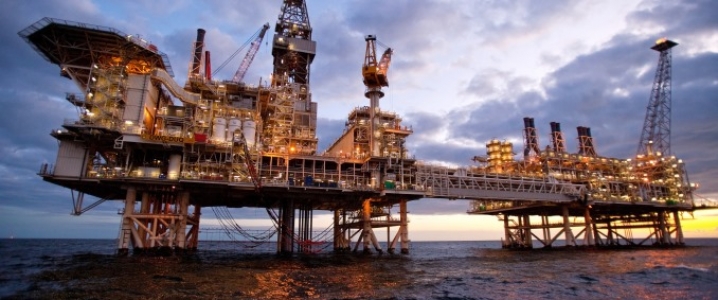
Since the oil industry started to recover from the 2014 price crash, U.S. supermajors ExxonMobil and Chevron have been re-aligning their global operations with their longer-term priorities, betting more on the shale patch at home and on several strategic projects worldwide.
The companies are now looking to exit Azerbaijan, including the country’s biggest oil field and some pipeline infrastructure. This would mark the withdrawal of U.S. companies from the Azeri oil industry a full 25 years after western majors, including five U.S. firms, signed what is known as “the Contract of the Century” in the former Soviet republic.
As part of a re-prioritization of its global operations, ExxonMobil is looking to sell its minority stake in the giant Azeri oil field Azeri-Chirag-Gunashli (ACG) in the Caspian Sea, hoping to obtain as much as US$2 billion for its interest, Reuters reported on Tuesday, citing banking and industry sources.
Chevron, for its part, is reviewing its global asset portfolio and has “decided to initiate the process of marketing, with a view to a potential sale, of our Chevron affiliate interests in the Azeri Chirag and Deep Water Gunashli (ACG) project and the Baku-Tbilisi-Ceyhan (BTC) Pipeline,” the company said in a statement to Reuters.
Chevron has an 8.9 percent stake in the BTC pipeline, which carries oil from the ACG field and condensate from Shah Deniz across Azerbaijan, Georgia, and Turkey.
Chevron also owns a 9.6-percent stake in the ACG oil field, and is currently the third-largest shareholder behind field operator BP and Azeri state firm SOCAR. Exxon holds 6.8 percent in the field, while the other foreign partners in the venture include the operator BP, INPEX, Equinor, TP, ITOCHU, and ONGC Videsh.
Azeri-Chirag-Gunashli was Azerbaijan’s first offshore oil Production Sharing Agreement (PSA) contract with Western majors, and was hailed as “the Contract of the Century”. The country and a consortium of foreign oil companies signed a 30-year deal in 1994 to develop the field. Exxon was part of the initial group of companies that signed the contract with Azerbaijan, which also featured four other U.S. companies at the time— Amoco, Unocal, Pennzoil, and McDermott. Last year, the deal was extended to 2050.
Production at the giant Azeri field averaged 596,000 bpd in the first half of 2018, accounting for around 75 percent of Azerbaijan’s total oil production.
The field has received U.S. support, and U.S. companies have been involved in its development as it was seen as a giant resource that could undermine Russia’s dominance in European energy supply. But the promise of possible new finds near the giant field never materialized, and Azerbaijan tightened its grip on energy assets via SOCAR.
Approached by Reuters, Exxon spokeswoman Julie King declined to comment on the company’s plans for Azerbaijan, just saying that “we don’t comment on market rumors or speculation.”
In recent years, Exxon has shifted its global focus to offshore exploration in Guyana, where it has found major reserves of oil—including a tenth find announced earlier this week—with plans to start producing from the Liza Phase 1 development of up to 120,000 barrels oil per day by early 2020.
According to energy consultancy Wood Mackenzie, the Liza Complex now best compares to Brazil’s Lula-Iracema, one of the world’s largest deepwater finds. Guyana can “easily become the fourth largest oil producing nation in Latin America by the next decade, with chances to outperform the countries preceding it. If Venezuela and Mexico fail to address production declines, Guyana could quickly surpass them to number two,” said Luiz Hayum, research analyst with WoodMac’s Latin America upstream oil and gas team.
Chevron, for its part, is involved in giant oil projects in another country on the Caspian Sea, Kazakhstan, and holds major stakes in two giant oil fields—Tengiz and Karachaganak.
Despite different priorities globally, both U.S. supermajors are betting big on their home shale patch, building up acreage and stakes and ramping up oil production in the Permian.
Chevron reported its highest ever quarterly oil production of 2.96 million barrels of net oil-equivalent in Q3, thanks to rising Permian production.
Exxon, for its part, reported increased Q3 production compared to Q2, thanks to the Permian.
“We’re pleased with the increase in production from the second quarter of 2018 recognizing it reflects contributions from just one of our key growth areas, the Permian,” chairman and CEO Darren Woods said in the earnings release.





























